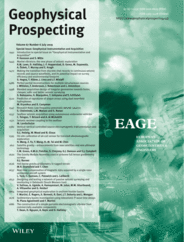-
oa Sedimentary basins investigation using teleseismic P‐wave time delays
- Source: Geophysical Prospecting, Volume 67, Issue 6 - Geophysical Instrumentation and Acquisition, Jun 2019, p. 1676 - 1685
-
- 28 May 2018
- 21 Jan 2019
- 18 Mar 2019
Abstract
Passive seismic methods have been proven successful in recent years at retrieving information about the large‐scale structure of a sedimentary basin. These methods are based on ambient noise recordings, and local and distant (teleseismic) earthquake data. In particular, it has been previously observed that the arrival time of teleseismic P‐waves recorded inside a sedimentary basin shows time delays and polarization that both strongly depend on the basin properties and structure. In this paper, we present a new methodology for determining seismic P‐wave velocity in a sedimentary basin, based on the time delay of a teleseismic P‐wave travelling through the low‐velocity basin infill, with respect to a teleseismic wave recorded outside the basin. The new methodology is developed in a Bayesian framework and, thus, it includes estimates of the uncertainties of the P‐wave velocities. For this study, we exploit synchronous recordings of teleseismic P‐wave arrivals at a dense linear array of broadband seismic stations, using data from two teleseismic events coming from two different incoming angles. The results obtained by the new proposed methodology are successfully compared to classical cross‐correlation measurements, and are used to infer properties of a sedimentary basin, such as the basin bounding fault's geometry and the average P‐wave velocity of the sedimentary basin fill.




